“What is that thing?” asks General B. Grant, pointing to the metal ring in my nose as we sit in the backroom of his Qualla Boundary jewelry shop. “It bothers me,” he says, laughing. “Why do you do that?”
I mumble some half-coherent explanation about being “unique.” The 71-year-old Cherokee artist regards me for a moment, then lifts his shirt to reveal a set of cross-hatched scars across his breast.
“I do the body-changing too: I’m a Sundancer,” he says. “There’s a reason we do what we do. It has a spiritual connection, to get closer to the Creator; to have a better understanding and relationship with myself. That’s what spirituality is: It’s action that we do that we don’t realize we’re doing, when we’re seeking something in life.”
Devil’s in the details
“Guys like you use the word ‘culture,’ but it isn’t really a culture — it’s a lifestyle that we still live,” stresses Sonny Ledford, who works with the Museum of the Cherokee Indian as one of the Cherokee Friends — tribal members who share their expertise through demonstrations of traditional crafts and presentations about Cherokee life and practices. The Eastern Band alone has over 13,000 registered members, and there are many more in Oklahoma, where most Cherokees were forced to move in the 1830s. Therefore, the very idea of “traditional spirituality” can be misleading, says Trey Adcock, who teaches in UNC Asheville’s Cherokee studies program (see sidebar, “Flipping the Argument”). “There are 40-odd churches on the Qualla Boundary. For some families, what is traditional is being a Baptist,” notes Adcock, a member of the Tahlequah, Okla.-based Cherokee Nation.
Bo Taylor, the museum’s executive director, melds traditional beliefs with his Christian faith. “I’m a member of the Methodist Church, but I also honor and still do my Cherokee things,” the former Tribal Council member explains. “My relationship with God is the same whether I’m sitting in the sweat lodge, dancing around a spiritual fire or sitting in a church.”
Ultimately, spirituality is a deeply personal matter, and many Cherokees are reluctant to discuss it with outsiders. “You don’t go into a Methodist church and ask how they do their sacraments,” Taylor points out. “If you take a look at Christianity, it evolves and has changed, and it has a different meaning now.” Cherokees, too, “still have a living, breathing culture that’s evolving and changing.”
One with the world
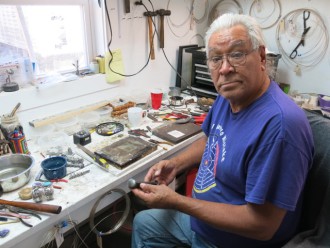
Whatever else they may do, spiritual practices typically help people understand the world around them and their place in it. That holds true for traditional Cherokee beliefs as well.
“There’s always a Creator, a God or a Jehovah,” notes Grant. “The Creator shook out his medicine bag, and it all formulated into this ball, which is spirit.”
A strong sense of place and reverence for the Southern Appalachians features prominently in Cherokee traditionalists’ worldview. “When everything fell, the way that it fell dictated the environment,” continues Grant, gesturing out his workshop window to the woods beyond. “The Cherokees were put right here: [the Creator] gave us this. What that means is the people, the animals and everything else have learned to live within that balance, and that spirit understands that.”
In traditional Cherokee society, says Taylor, there’s a spiritual aspect to just about everything. “I used to play Indian stickball, which is riddled with spirituality. Water is a spiritual thing: Cherokees see it as a living, breathing entity of God, one of his great tools. It not only cleansed us, it was a way of communing with God, of saying, ‘Lord, I have come.’”
A key aspect of spirituality, says Grant, is the idea of being present in one’s prayers and actions. “That is what a ceremony is about: knowing that it’s going to work; knowing there’s a Creator; knowing there’s four directions; knowing there’s another place. You have to take time to look at yourself, look at your spirit and where you come from, and let the spirit guide your interests and love.”
Learning from the elders
Raised in a white community in Tennessee, it took Grant decades to find the path to his Cherokee roots. “I was a white man until I was 36,” he says. “All the things I learned came from the community I lived in.”
A chance encounter with “an old drunk who’d been sober for 25 years” opened Grant’s eyes to the beliefs he follows today. “He told me the truth: what the colors mean, what the directions mean, what the songs and prayers mean.”
Ledford, who’s now in his 50s, was shaped by his experiences growing up in the Qualla Boundary. “My parents were fluent speakers, full-blooded,” he explains. “We lived in a log cabin built by my dad and my brothers. Most people think that was 100 years ago. It’s not: A lot of families my age grew up that way.”
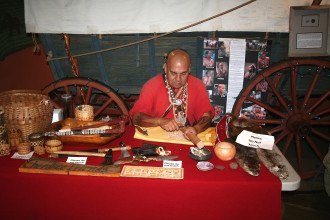
The elders, says Ledford, are the ones who instill a desire to pass on the lessons learned to future generations. “People try to pat me on the back, but I’m not the one who should get the compliment: It goes to all those that taught me because without them I couldn’t teach what I teach.”
Jarrett Wildcatt, who’s also part of the Cherokee Friends program, says the example set by Ledford, Taylor and The Warriors of AniKituhwa, a performance group that showcases traditional Cherokee ways of life and thought, inspired him to begin examining his heritage more closely.
“Growing up, I knew the top of the cultural iceberg: the crafts, a little bit of the language, reading books,” he recalls. “The Warriors group helped me start realizing that there’s more to it than just dressing up and dancing. Now, I’m going beneath the surface, learning more about the language, the beliefs, the orientation: As Sonny would say, ‘Being Cherokee.’”
Great wonders
Ledford, Wildcatt and their colleagues now work with the museum and other organizations to help disseminate that deeper understanding of traditional culture, both within their community and beyond its borders.
Many people, notes Wildcatt, think Cherokees “lived in tepees or wore headdresses because you see the dancers wearing them on the street.” But while tourists “can have fun watching the Indians dance or take pictures of Indians wearing headdresses,” the museum tries to present a more accurate picture of the history and culture.
These educators also urge those who claim Cherokee heritage to go beyond the surface and really explore their ancestors’ history. When people visit the museum or the boundary, he maintains, “At least 80 percent of the time they want to claim Cherokee lineage. That’s fine, but we encourage them to learn from it, live it: There’s more to being Cherokee than just having an enrollment card or having a casino.”
One current focus is ensuring the survival of the Cherokee language. As the remaining fluent speakers age, their numbers are dwindling. In response, the Eastern Band established the New Kituwah Academy. “Basically, it’s a language immersion school: They get young children and put them in an environment where they can speak the language,” Wildcatt explains, adding, “That academy has done great wonders.”
Spreading the word
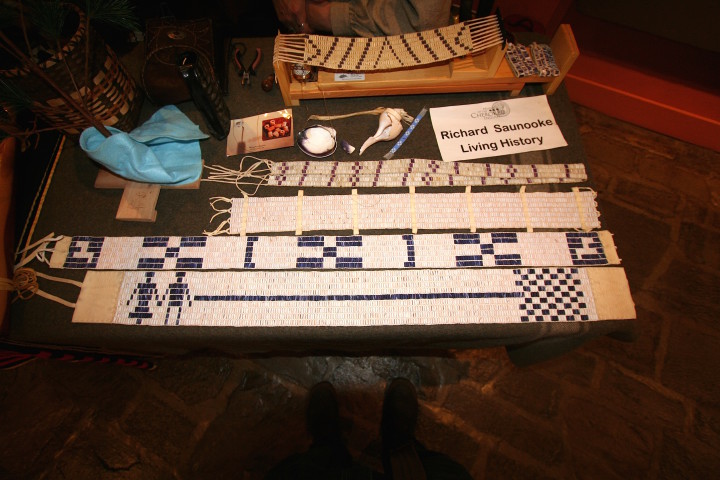
Formed in 2003, The Warriors of AniKituhwa troupe travels the country giving lectures and performing traditional Cherokee songs, dances and ceremonies. But originally, there was resistance, even within the Cherokee community. “In the beginning, it was rough,” remembers Ledford, one of the group’s original members. “We were getting cussed at by churchgoing members, calling it the devil’s dance and worshipping the devil.”
Since then, however, attitudes have changed. “Now, they kind of pat us on the back and come to us to learn,” he says, smiling. “It’s kind of 180’d from how it was.”
In addition, the Warriors use their position as cultural ambassadors to speak out about national issues such as excavating Indian burial sites. “Society acts like we’re less than human, digging up our burial mounds and villages, studying us like we’re from another planet,” says Ledford. “It makes me feel good that I can actually help that stop.” Even well-intentioned outsiders, he maintains, have only limited ability to represent Cherokee ways, saying, “This article you write, people will read it, but they won’t feel it.”
Ledford also works with Boy Scout groups in the region, drawing on his extensive knowledge to give them an accurate understanding of the symbolism of badges and programs based on native culture. “If you’re going to teach a class about something, are you going to hire a professor or a kindergarten teacher?” he asks rhetorically.
Fighting stereotypes
Despite the progress, however, prejudice and misconceptions still abound, says Wildcatt. The Cherokee Friends, for example, try to educate visitors about the offensive connotations of words like “redskin” and “squaw” while correcting erroneous ideas about daily life in his community.
“We’re going to tell people the truth: We’re not going to sugarcoat everything,” Wildcatt explains. But that approach, he continues, can be misunderstood. “People come here and say we hate the white man, but I don’t have any hate toward non-Cherokees. That’s why I’m glad I’m here to educate people: If we’re not going to do it, who will?”
Adcock, meanwhile, asks his students “to use their cellphones and record images of natives that they see. By the end of the semester, we had 100. Culturally, images are so deeply embedded in the American psyche — as far as what native people are and should be — that we often can’t see real people.”
For Ledford, a big goal is simply driving home the message that the Cherokee don’t exist solely in history books. “A lot of people come and ask, ‘How does it feel to be a conquered people?’” he reveals. “If I was conquered, I wouldn’t be sitting here dressed as I am. We’re not conquered — never have been. We’re probably more spiritual now than we ever were.”
Overfeeding
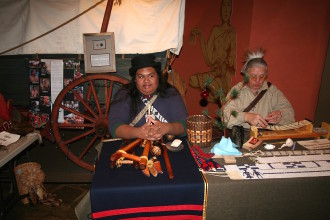
Sometimes, though, spirituality spills over into the contentious realm of politics, which transcends cultural boundaries. The mainstream media, says Wildcatt, paint the outcry over the Dakota Access Pipeline “like it’s all an Indian thing.” But Standing Rock, he maintains, “is not an Indian issue: It’s an environmental issue. That’s people’s drinking water, water they use to clean. It’s Earth.”
Taylor hopes more non-native groups and “people who say they’re Christians” will recognize the importance of what Indian people are fighting for there and choose to stand with them. “Water is one of God’s great, awesome powers,” he points out, “Why would you desecrate that?”
Grant agrees. “We’re fed off this earth; we all feed off it. When we overfeed, then everything we need gets eaten up and we starve to death. That dictates our spirituality.”
Ledford, too, sees Standing Rock as an opportunity for outsiders to gain a deeper understanding of how his people see the world around them. “We look at society differently here on the boundary because we live differently than you guys do,” he says. “We’ve always been connected to the earth, animals, trees. People used to look at us like we were stupid when we talked about that, but they’re finally opening their eyes and understanding that what we’re talking about is right.”
To each his own
In the end, however, Grant stresses that future generations must chart their own spiritual course in relation to their people, their past and the world at large.
“You remember I said I was white until I was 36? Well, that’s what I allow to the younger generation — to be themselves,” the jewelry maker explains. “I’m not going to force anyone to do something that I say that’s going to hurt them later on. I’m only a model, that’s all.”
And over time, each individual’s understanding will evolve. Regardless of a person’s race or cultural heritage, he maintains, “Your answers are never going to be the same as you grow, as your mind absorbs. It’ll be different all the time, but it’ll be the same, like an attachment or a postscript.
“What does it mean? You have to decide what you’re looking for and what you need.”


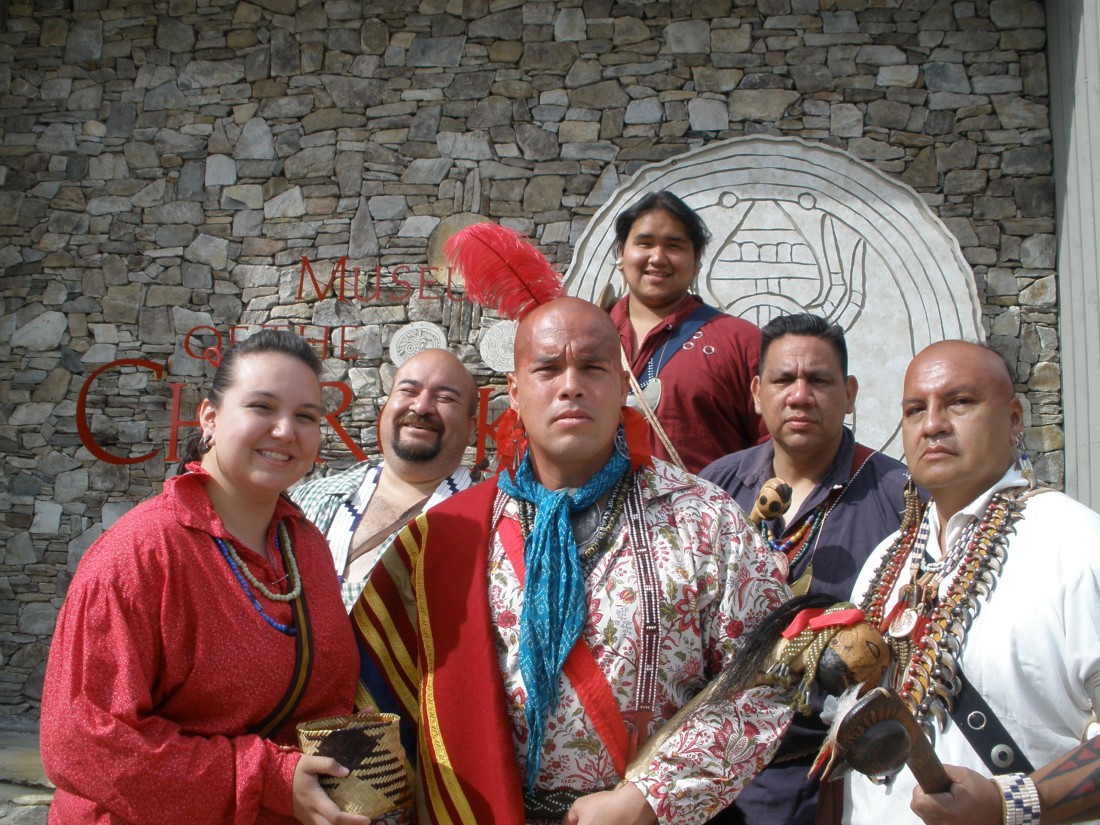


Is the like button broken ? I read a cple cherokee
Posts in their entirely & clicked like . The count # did not change .
The Rainbow Warriors are starting to wake up ;
Keep waking up more Thank You
Hi Russell,
Thanks for reading and commenting! We are investigating the issue with the “Like” button currently, and will get it fixed ASAP. Please let us know if you’re still having issues with it in a day or two.
Thank You
Keep up the gr8t articles
I followed a link to your site from Hawk Walkingstick a connection on linked in shared w me which I shared to my twitter feed as I felt it was an excellent piece.
I then visited & read more pieces .
You know the rest .
I hope ur Page continues to grow ;
So keep up the good works .
Go in peace, Russ Bowles
#RainbowWarriorsRiseNow
Feel free to post on my time line so more can
Find you directly ..
I find great value in your piece, and appreciate the sharing of spirituality among the Cherokee Nations and their connection to the Creator and the Earth! I am also of Cherokee descent, my great grandmother was full blood Cherokee, as well as raised in Appalachia. It is a calling from our Creator to return to Him! The Water is the Center of All that is Holy! This was revealed to me In the Spirit, and I have come closer to the Father now than I ever was! I happened upon this piece and I am grateful to know that there are those who are taking the time to teach our younger generations to care for what for the Father has given to us. If we do not teach them, who will? Thank you and be Blessed Greatly in the Messiah!